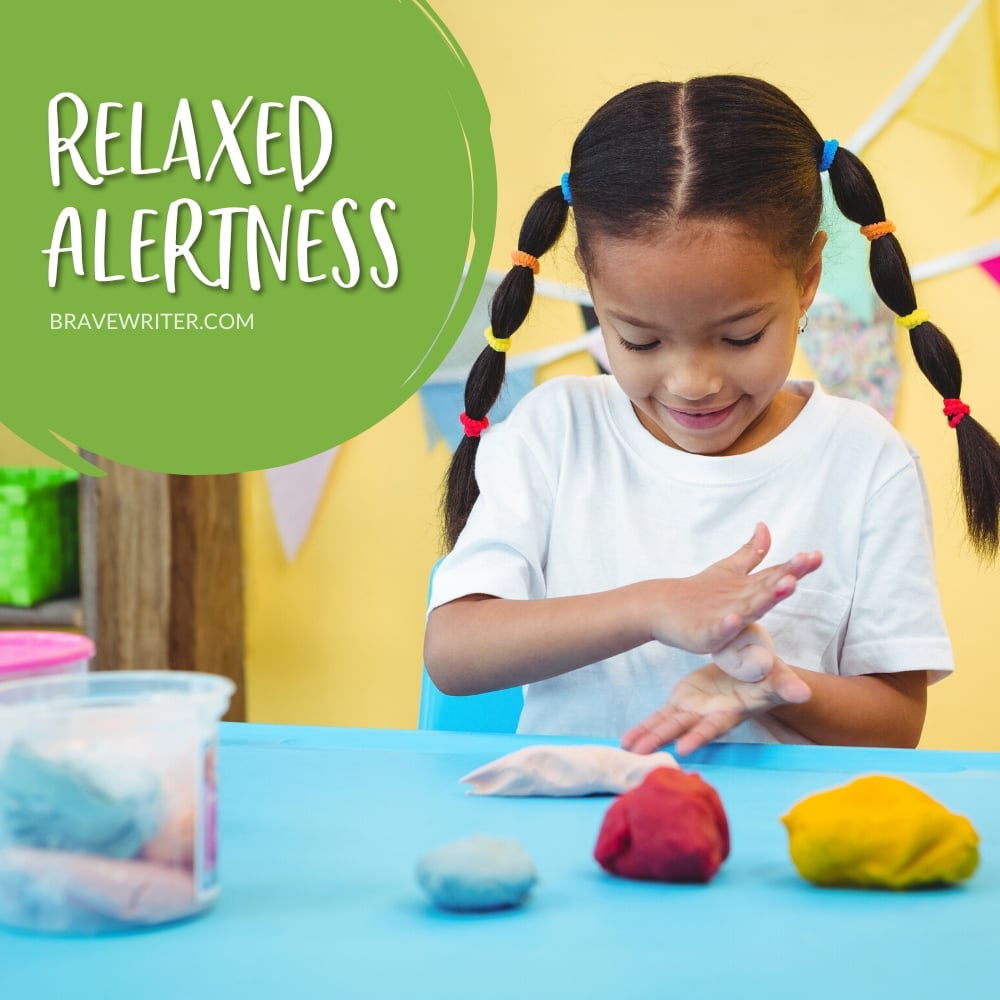Relaxed Alertness

It’s easy to associate learning with struggle and pain. Yet studies show that when you’re relaxed and happy, you’re more receptive to learning.
I challenge you today.
Gather data on who your kids are and how they learn.
Notice when your child appears “alert and relaxed.”
Take the day off of any “formal” lessons. Just sit around with your cold cup of coffee (let’s be real, is it ever hot by the time you drink it?) and pay attention.
When does your child drop into an activity and become absorbed?
If you are beset by a gaggle of wanderers in your house, help them out.
Give them art supplies, a sewing machine, colored pens, all sorts of paper, binoculars, the beeswax candle kit you keep “saving” for a better day, modeling clay, a unicycle, window markers, all the LEGO kits, the collection of dolls and their outfits, access to the baking mixes, the glue gun, shovels and pails, a calculator, a deck of cards, board games…
- See what they do.
- See how long they do it.
- Notice when they need help and when they reject it.
- When you see a smile, pause, and note to yourself what just happened.
- When you see frustration or a wandering mind, check in. Make another offer, join the activity, bring a snack.
Dedicate today to learning about how your children learn…for themselves.
Renate and Geofrrey Cain say that the best state of learning is “relaxed alertness.”
I invite you today to relax and be alert.
Notice when relaxed alertness kicks in for your kids. How did that happen?
Maybe jot it down for next week.
Most of our products have weekly planners and skills trackers that help you
do this kind of noticing and record keeping to help you be an effective parent educator.
Check out our bundles.


















